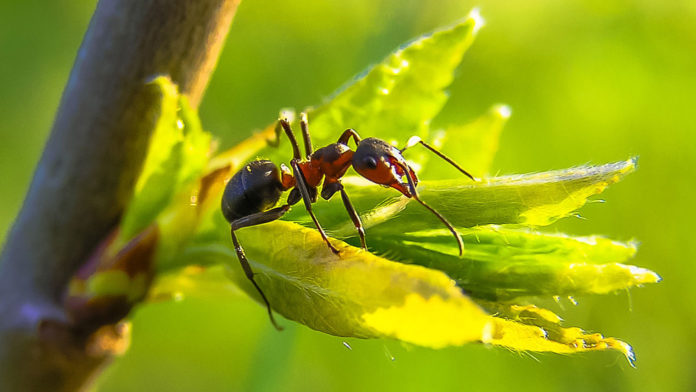Species that live together evolve together.
An obvious example are lichens: fungi that grow with either algae or cyanobacteria and become so entwined that they behave like a single composite organism.
But there are also many species that appear distinct, but that have evolved special features that allow them to cooperate with each other in ways that benefit both. These relationships are called mutualism, and common examples include pollination and seed dispersal, where animals help plants with reproduction and receive a food reward in return.
Megan Frederickson, professor of ecology and evolutionary biology at the University of Toronto, is studying the genes that drive another type of mutualism, where ants physically defend the plants that house them.
Domatia are specialized chambers that are found on around 400 species of tropical plants, and they grow on the nodes that groupings of leaves sprout from. They are the perfect shelter for small arthropods like ants. When a colony of ants moves in, the ants quickly fill the domatia with brood and workers, and the plants supply food bodies for the ants on the surfaces of young leaves.
In return, the ants defend their home from plant-eating herbivores, preying on the grasshoppers, beetles, and caterpillars that might otherwise cause significant damage to the plant.
The researchers looked at a specific ant-plant pair in the field: Allomerus octoarticulatus colonies on Cordia nodosa trees in the Peruvian tropical rainforest. They pinpointed a pair of genes that modify the foraging behaviour of the ants and make them more likely to detect invading herbivores and protect their plant from harm.
The activation of these genes and the resulting benefit to the plants suggest a molecular basis behind their complex behaviour. It may help the colony delegate specific tasks, encouraging plant bodyguard behaviour in foragers, while other workers help with nursing tasks.
It’s not unusual to find trees absolutely covered in ants in the rainforest, and their sheer numbers make them important players in many ecosystem services. In addition to the species that protect plants, there are many that raise and defend other small insects, and still others that live in the soil and contribute to mixing, aeration, drainage, and chemistry.
These remarkable relationships demonstrate how ecosystem inhabitants are elaborately interconnected, all the way down to the molecular level.









































